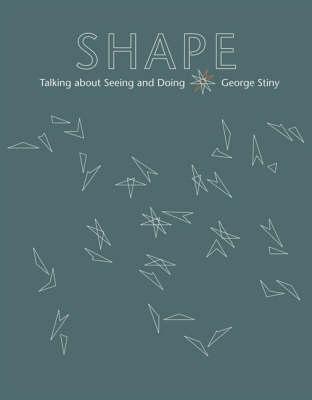Overview
In Shape, George Stiny argues that seeing shapes -- with all their changeability and ambiguity -- is an inexhaustible source of creative ideas. Understanding shapes, he says, is a useful way to understand what is possible in design. Shapes are devices for visual expression just as symbols are devices for verbal expression. Stiny develops a unified scheme that includes both visual expression with shapes and verbal expression with signs. The relationships -- and equivalencies -- between the two kinds of expressive devices make design comparable to other professional practices that rely more on verbal than visual expression. Design uses shapes while business, engineering, law, mathematics, and philosophy turn mainly to symbols, but the difference, says Stiny, isn't categorical. Designing is a way of thinking. Designing, Stiny argues, is calculating with shapes, calculating without equations and numbers but still according to rules. Stiny shows that the mechanical process of calculation is actually a creative process when you calculate with shapes -- when you can reason with your eyes, when you learn to see instead of count. The book takes the idea of design as calculation from mere heuristic or metaphor to a rigorous relationship in which design and calculation each inform and enhance the other. Stiny first demonstrates how seeing and counting differ when you use rules -- that is, what it means to calculate with your eyes -- then shows how to calculate with shapes, providing formal details. He gives practical applications in design with specific visual examples. The book is extraordinarily visual, with many drawings throughout -- drawings punctuated with words. You have to see this book in order to read it.
Full Product Details
Author: George Stiny (Massachusetts Institute of Technology)
Publisher: MIT Press Ltd
Imprint: MIT Press
Dimensions:
Width: 17.80cm
, Height: 2.20cm
, Length: 22.90cm
Weight: 0.998kg
ISBN: 9780262195317
ISBN 10: 0262195313
Pages: 432
Publication Date: 07 April 2006
Recommended Age: From 18
Audience:
College/higher education
,
Postgraduate, Research & Scholarly
Format: Hardback
Publisher's Status: Out of Print
Availability: Awaiting stock

Reviews
George Stiny is the paterfamilias of grammars for shapes, embracing all of their inherent ambiguity. This book beautifully explains why shapes are so ambiguous and why their lack of structure is so crucial for design. Stiny shows that grammatical rules for shapes can produce an infinite complexity of designs, just as grammatical rules can produce the expressive richness of prose or poetry. Robert Pirsig's *Zen and the Art of Motorcycle Maintenance* provides an introduction to the damaging effects of structure and analysis in design; for readers wishing to embrace ambiguity, and build on its expressive power, *Shape* supplies the essential deeper insights. --Erik K. Antonsson, Professor of Mechanical Engineering, California Institute of Technology *Shape* is an important read for anyone interested in the formal process of design. An insightful analysis of the computation, art, cognition, and philosophy of shapes, Stiny's book shows us that even the simplest shape is both ambiguous and perfectly clear. --Jonathan Cagan, Department of Mechanical Engineering, Carnegie Mellon University, coauthor of *The Design of Things to Come*
Stiny is to 'shape' as Chomsky was to 'word' or Wolfram to 'number.' In my view, though, Stiny may well prove to be the most radical of the three. How different a place his pictorial world is from standard textual or digital worlds: with shape there is no vocabulary, no syntax, no bits, no atoms. As Stiny draws, he talks. Shapes and shape rules bear the force of argument. These drawings are to be looked at keenly, even traced and redrawn by the reader. The supportive text illustrates what can be seen and done, providing both a personal and intellectual history. Through its drawings and maxims, Shape challenges much conventional wisdom in philosophy and education, in computer science and artificial intelligence, and in design and the visual arts. --Lionel March, former Rector, Royal College of Art, London, and Emeritus Professor, Design and Computation, University of California, Los Angeles
Author Information
George Stiny is Professor of Design and Computation at MIT.



